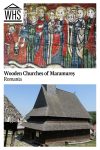Wooden Churches of Maramureş
By Rachel Heller
What are the Wooden Churches of Maramureş?
The Wooden Churches of Maramureş are a group of churches in the northern part of Romania that date from the 14th to the 18th century. What distinguishes them is their unique style: entirely built of wood, they have tall, graceful steeples on the western end of the building. The steeple tops a rather simple rectangular church with a steep shingled roof.
Disclosure: This article contains affiliate links. Making a purchase through an affiliate link will mean a small commission for this website. This will not affect your price. Privacy policy.
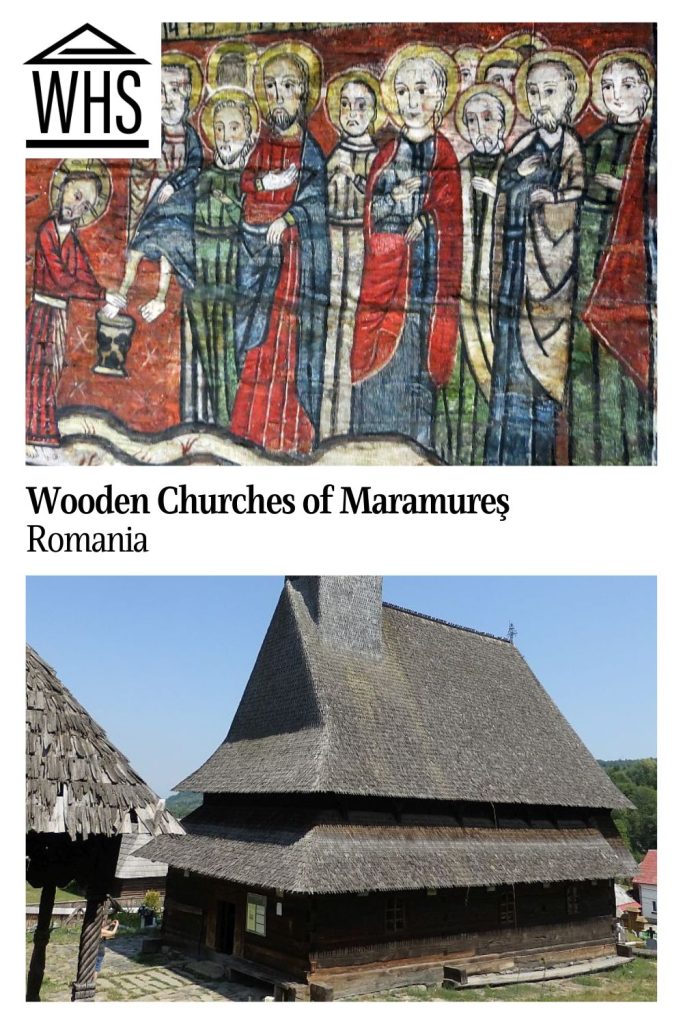
Inside, the walls of the churches are covered with images portraying Bible stories in a brightly-colored folk art style.
Why are the Wooden Churches of Maramureş a UNESCO World Heritage site?
The Maramureş churches are “outstanding examples of vernacular religious wooden architecture … showing a high level of artistic maturity and craft skills.”
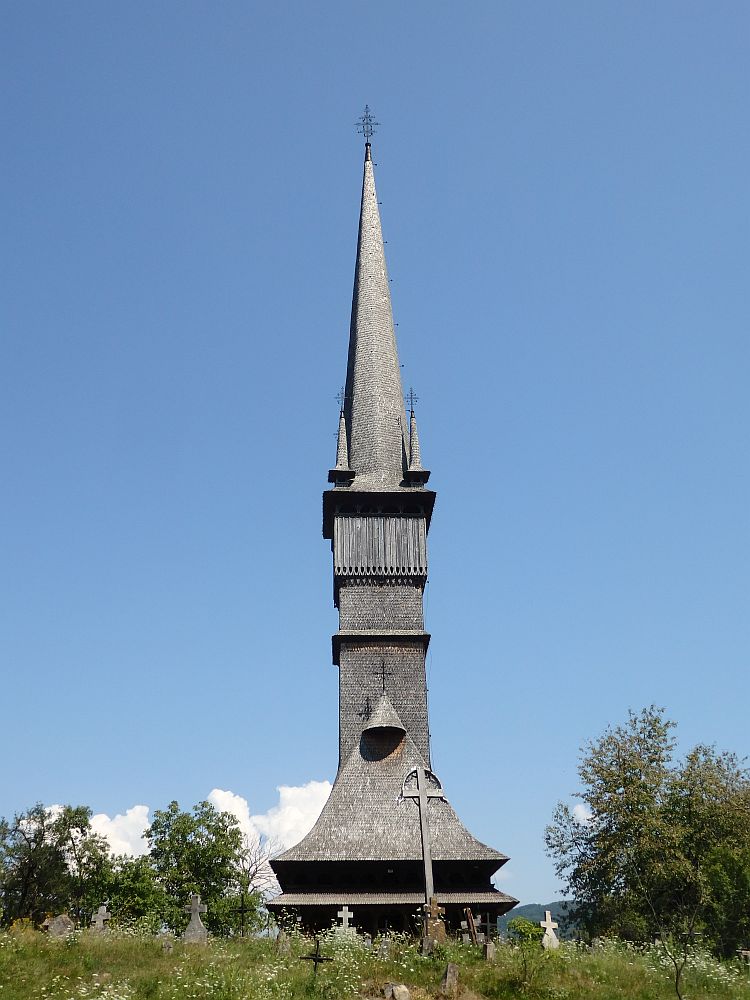
What can you expect on a visit to the Maramureş churches?
Each of the eight churches included in the UNESCO designation is in a different village, and the villages are widely-scattered across the district of Maramureş. These are very off-the-beaten-path destinations, and you can generally expect to have each church to yourself.
However, they do not stay open all the time. Instead, part of the charm is calling the telephone number posted on the church and then waiting until a villager comes to open the church for you. While you wait, admire the homemade grave markers: another example of folk art.
Once inside, take a good look at the paintings on the walls and ceilings. The space may be small – generally one high-ceilinged room with a small balcony above the back end of the room – but it holds a lot of images. Some also have icons on glass or wood as well.
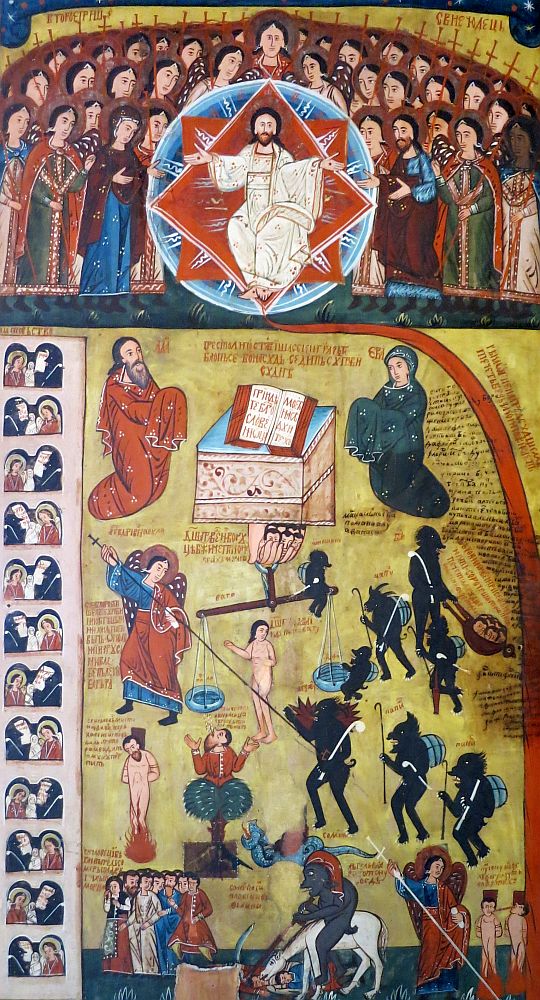
These churches are a study in contrasts. While the spires are tall and graceful, the base of the structures – the walls of the churches themselves – are generally quite heavy and simple: massive squared-off logs. The finely-detailed paintings inside form a strong contrast to the blunt, mostly unadorned simplicity of the outside walls.
Are the churches worth visiting?
Yes, if you are interested in vernacular religious architecture and/or folk art religious expression. And we certainly enjoyed the feeling of being so far off-the-beaten-tourism path in a part of Romania that is beautiful, with rolling hills, farmland and dense forests.
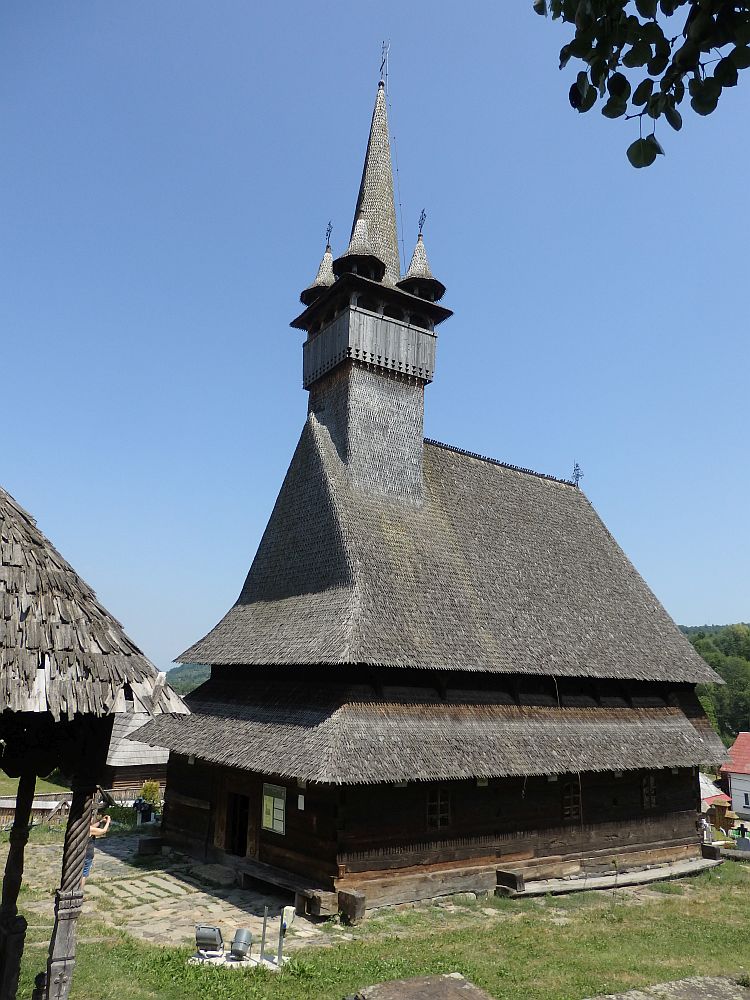
On the other hand, these villages aren’t near any popular tourist sights. You will have to be ready to devote a few days at least, since getting there is not quick – some of the roads are quite poor – and it takes time to get from one to the other. In other words, it will have to be the goal of the journey, not something you do in passing, on the way to something else.
Tips for visiting the Wooden Churches of Maramureş
Clearly this is not a site that can be seen quickly. Leave enough time. Also, don’t feel like you need to see all eight of the churches. While each will only take about a half-hour or so of your time – plus however long you end up waiting for someone to come open the church for you – it will take quite a bit of time to move between them, depending on the state of the roads. Find a place to stay in Maramureş (Use the map below.), stay a couple of nights and explore some of the churches at your leisure.
Whoever opens the church for you will charge a fee to enter, but it will be small. Some also charge a photography fee for inside. Many seem to expect to serve as a guide and source of information as well, and may expect a tip for this.
Don’t hesitate to visit the churches you might spot along the way as well. While eight are in the UNESCO listing, there are many other such churches – nearly 100 of them – in the region.
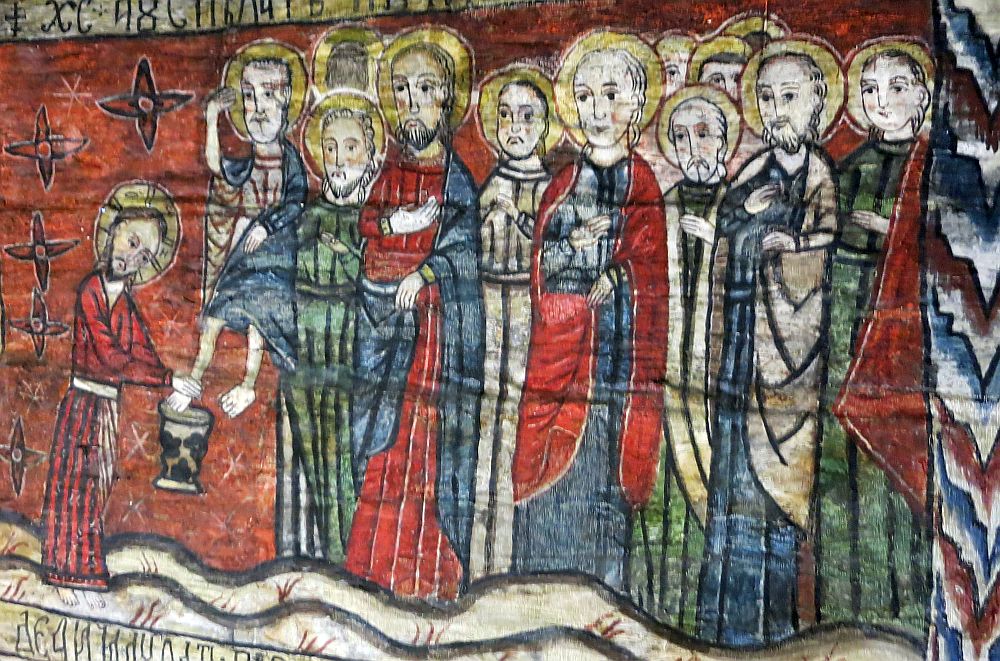
Where is Maramureş?
The district of Maramureş is in the very north of Romania, on the border with Ukraine. The eight churches, along with their nearest towns, are listed below. I’ve also added the date they were built and painted.
- Bârsana. Built in 1720, painted in 1806. Do not confuse it with the spired structures at the monastery in Bârsana.
- Budeşti. Built in 1643, painted in 1760, with a collection of 15th-century wooden icons and some glass painted icons too.
- Deseşti. Built in 1770, painted in 1780.
- Ieud. Built 1364. Nearby in the village of Ieud is another church from 1718 that is the largest wooden church in Romania.
- Plopiş. Built 1798-1805.
- Poienile Izei. Built in 1604, but possibly earlier. Painted in 1794.
- Rogoz. Built in 1633.
- Șurdeşti. Built in 1721.
By far the easiest and most efficient way to see these churches is by car. Use the form below to find a car to rent:
Alternatively, you could take a tour, but most tours just visit one of the churches, combining it with other aspects of the region. Nevertheless, at least you’d get to enjoy the gorgeous scenery without the stress of driving. See a number of different tours here.
For more information about the Wooden Churches of Maramureş, see the Romania tourism website.
Have you been to Maramureş? If so, do you have any additional information or advice about this UNESCO World Heritage site? Please add your comments below!

